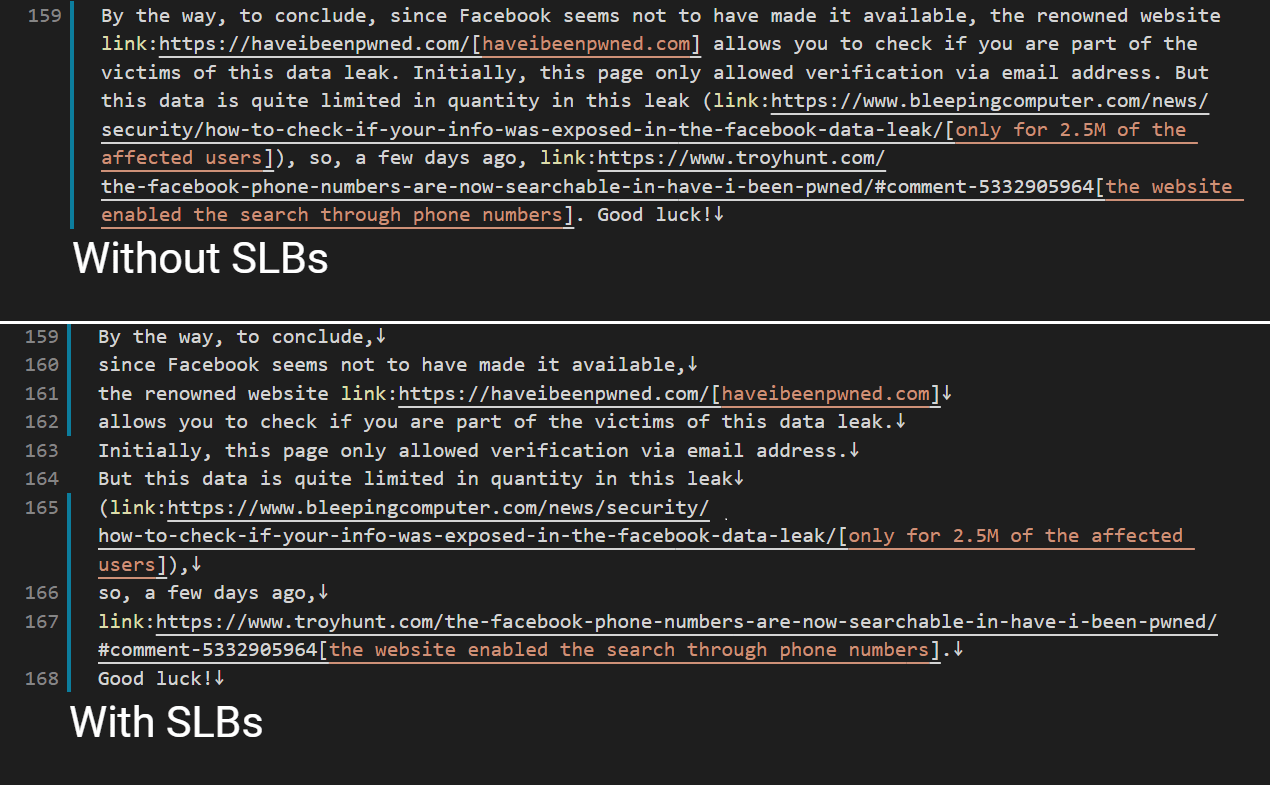Semantic Line Breaks
Our texts in the lightweight markup language Markdown must have Semantic Line Breaks (SLBs). Acting as semantic delimiters, SLBs reflect the logical structure of the writing, facilitate the identification of grammatical errors and the correction of the texts, and help keep an organized record of modifications in our version control system (GitLab/). Based on sembr.org, we apply the following rules:
-
An SLB should not alter the intended meaning of the text.
-
An SLB must occur after a sentence, which ends with a period, exclamation mark or question mark.
-
An SLB should occur after an independent clause that is punctuated by a comma, semicolon, colon, or em dash.
-
An SLB may appear after a dependent clause to clarify grammatical structure or satisfy line length restrictions.
-
An SLB is recommended before an itemized or enumerated list.
-
An SLB may be used after one or more items in a list to logically group related elements or satisfy line length restrictions.
-
An SLB must not occur within a hyphenated word.
-
An SLB may occur before and after a hyperlink.
-
An SLB may occur before inline markup.
-
The maximum number of characters before an SLB must be 80, except in cases with hyperlinks or code elements.
Tip: "Try reading the text out loud, as if you were speaking to an audience. Anywhere that you pause for emphasis or to take a breath is usually a good candidate for a semantic line break."
Example:

For more information regarding SLBs and their use, please check out the posts "Semantic Linefeeds" and "Semantic linewrapping."